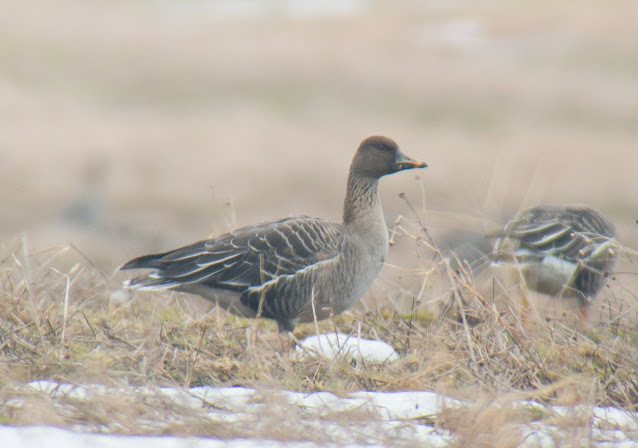Review - Flight Identification Of European Passerines And Select Land birds - by Tomasz Cofta
I recently purchased the above, as visible migration has become such a core part of my birding.
After a significant level of brexit related hassle, I finally got my supposed 3-5 day delivery from NHBS...over four weeks later. Seems UPS (their delivery service of choice) basically have had a continent-wide meltdown post brexit with various customs and software issues. Thanks Brexit-land...
As with most books I find in my lap, I began devouring it immediately.
The introductory text hooks you straight away. There is a sort of inspirational pragmatism to it that I find exceptionally appealing, almost abandoning the accepted convention that only by a thorough and complete assessment of all plumage features can any bird be identified, in favour of an unspoken reality. That reality being that we identify flyover passerines all the time.
How often have you been on a headland and had some finch or pipit go over, silently? You might not see mantle striping, or bill colour or wing bars or whatever, but after years of absorbing structure and flight patterns, you make the call anyway. "Greenfinch. Mipit. Etc etc."
To be 100% sure you should probably pursue, right? Find that finch on a hedge or that pipit on a patch of open ground? But you don't, because realistically you were happy enough it wasn't a rarity and so you carry on searching the gardens and hedgerows left ahead of you.
This book beautifully deals with 237 passerines and near passerines in exactly this situation, dealing with silhouettes and flight and flocking actions in a manner invaluable to the viz-migger.
The author notes himself that there are guides of a similar vein for Raptors (Forsman) and seabirds (Blomdahl), both of which are must haves for any birder.
However this guide borrows some style from the Crossley guides in the use of it's photographs and their placement.
Core principles of the book involve scrutiny of silhouette and flight style, with the latter depicted in a pleasingly sinusoidal wave function, clearly differentiating between flapping and gliding phases.
Silhouette examples
Flight style examples
Every aspect of bird flight mechanics is covered, from wing beat style of individual birds to flocking patterns and collective movement in extensive detail, with insights into how flocks disperse themselves and how individuals move with relation to eachother, which the reader may not have previously considered as an aid to identification.
Like many modern field guides, the book includes a selection of calls which you can access via a QR code link, this particular book using a soundcloud playlist.
This link is provided one time, in the introduction section, and unfortunately this is one of the let downs about this book. The playlist is arranged in alphabetical order and does not appear to be searchable. There is no direct link to the call from a species profile and so the functionality is very limited and, honestly, I can't see myself using it too much.
On each species profile, where relevant, a sonogram is displayed, so for those interested in their sound recording (not me) there is the option to make a comparison via this method.
Each species account is laid out over two pages, with illustrations on the left and photographs on the right, although there are some deviations from this pattern where groups of very similar species can be covered together.
Text is kept to a minimum, succinctly looking at size and structure, colour, flight and flock styles.
The flight style description requires reference back to the sine wave depictions in the introduction, which is a definite area the book could be improved. Surely the space could be found for an individual flight style graphic? Something for a second edition.
The illustrations are bright, vivid, accurate and hyper realistic. I found it interesting that, having recently discussed how often field guides choose to depict Pine Bunting as having just clean white undertail coverts, this one comfortingly displays them as streaked. Good stuff.
When it comes to photographic guides, there will always be some room for critique, and especially when dealing with birds such as passerines, getting in flight shots of use would always be difficult when compared to things like raptors or seabirds.
That said, I don't find much lacking here in the photos selected. Some are distant, some a tad blurred, however all feel very relevant and real world applicable, and for some of these, I have seen those birds in that same scenario.
For some groups of birds, such as warblers, the book perhaps feels like a bridge too far, and it would likely take many months, if not years, living and birding in excellent, eastern Mediterranean migrant hotspots to really attempt to absorb and utilize the content here.
However, there's more than enough of coverage across the selection of European residents and vagrants to make this book a must have for those living here and for any birder who hunts migrants in Britain or Ireland.
In summary, whilst there's definitely room for improvement in the layout, and certainly room for inclusion of a few more vagrants (Pacific swift in 2nd edition?), overall an excellent book that is a worthy inclusion to any migrant watcher's library.







Comments
Post a Comment